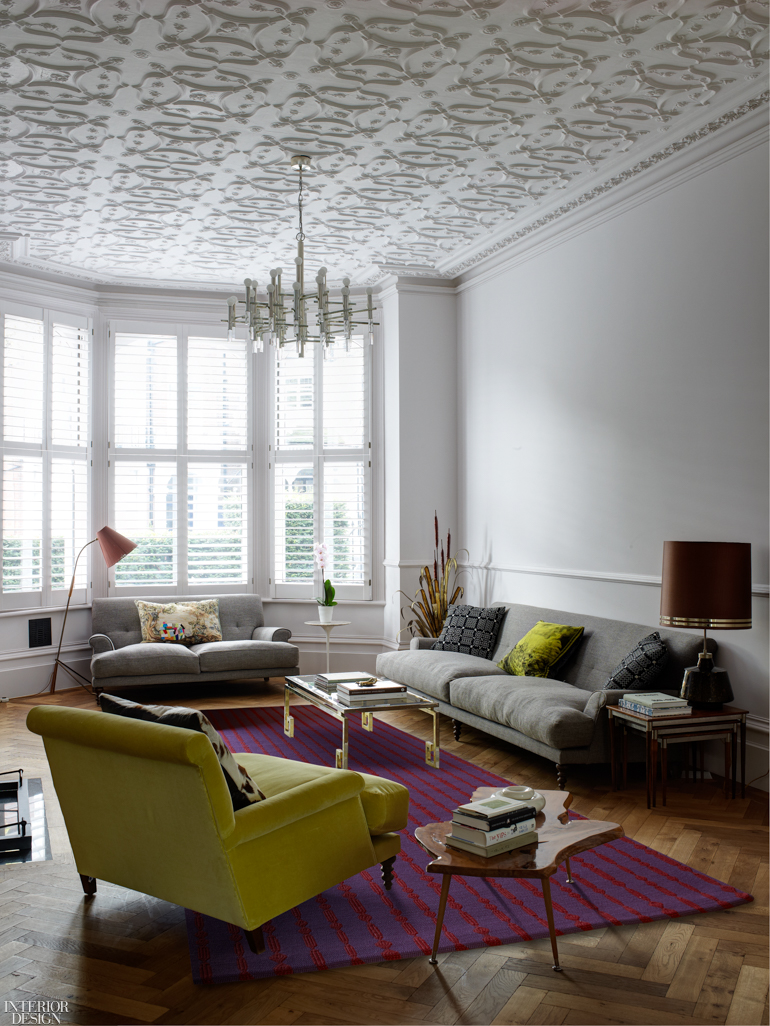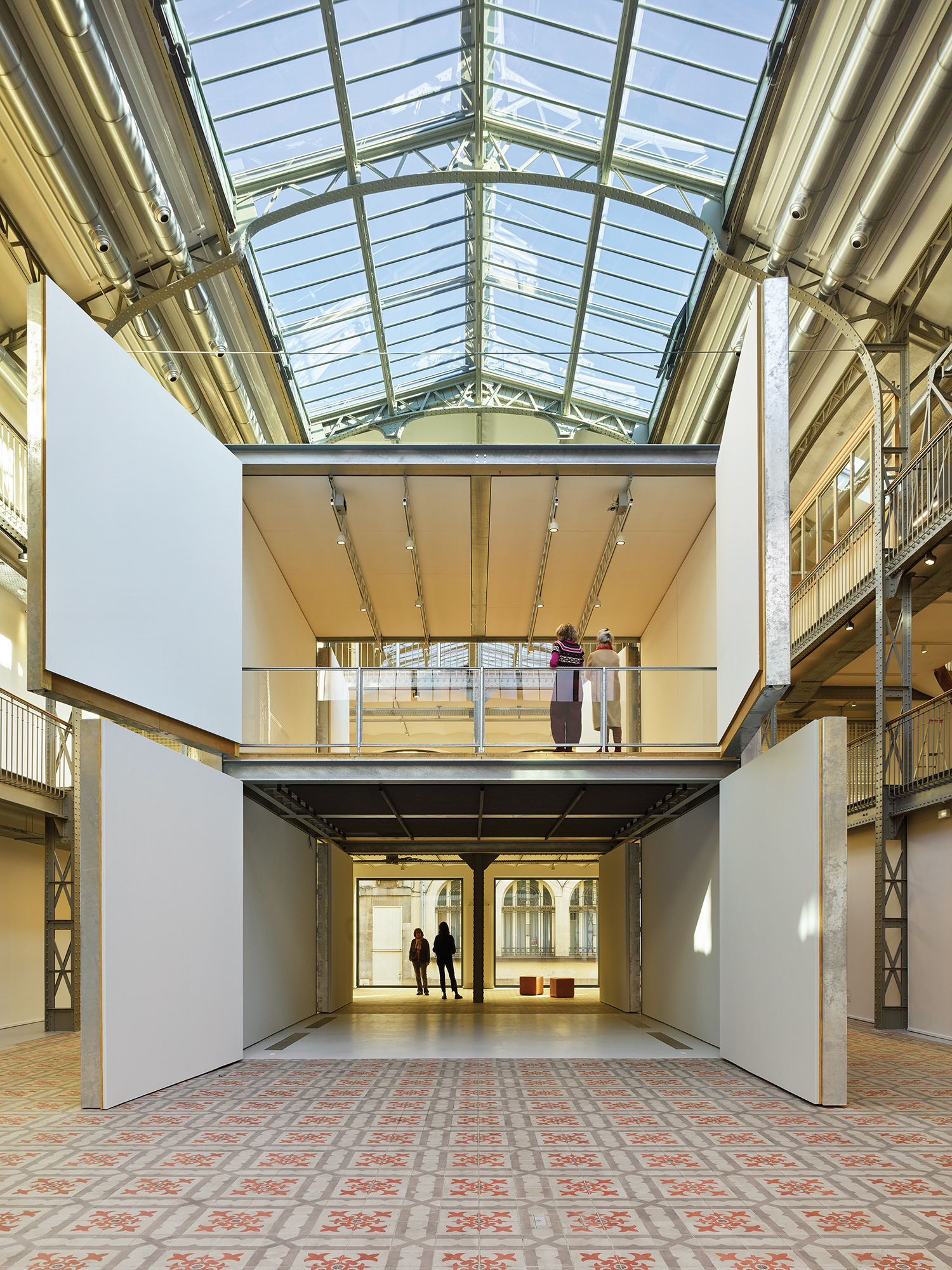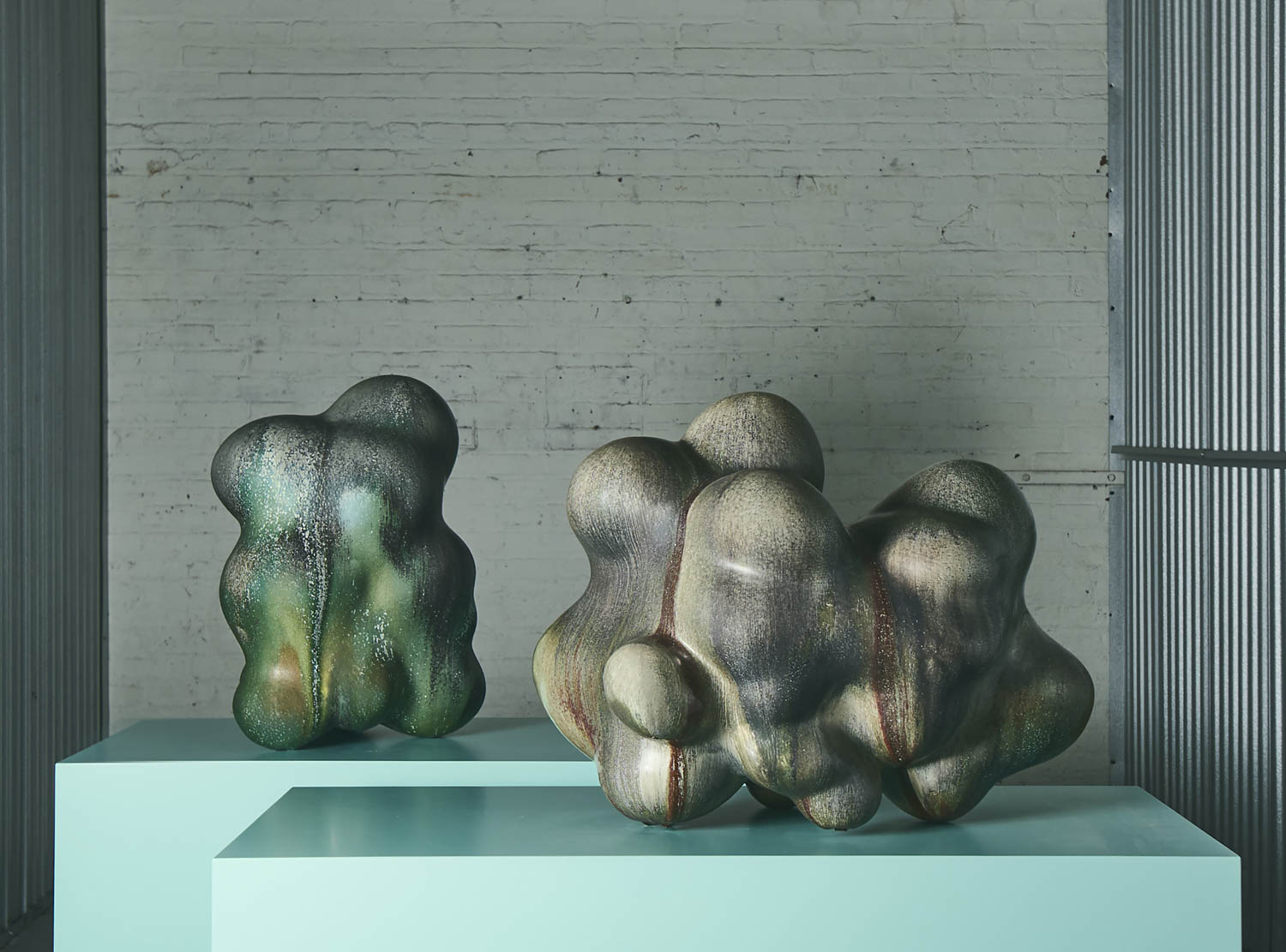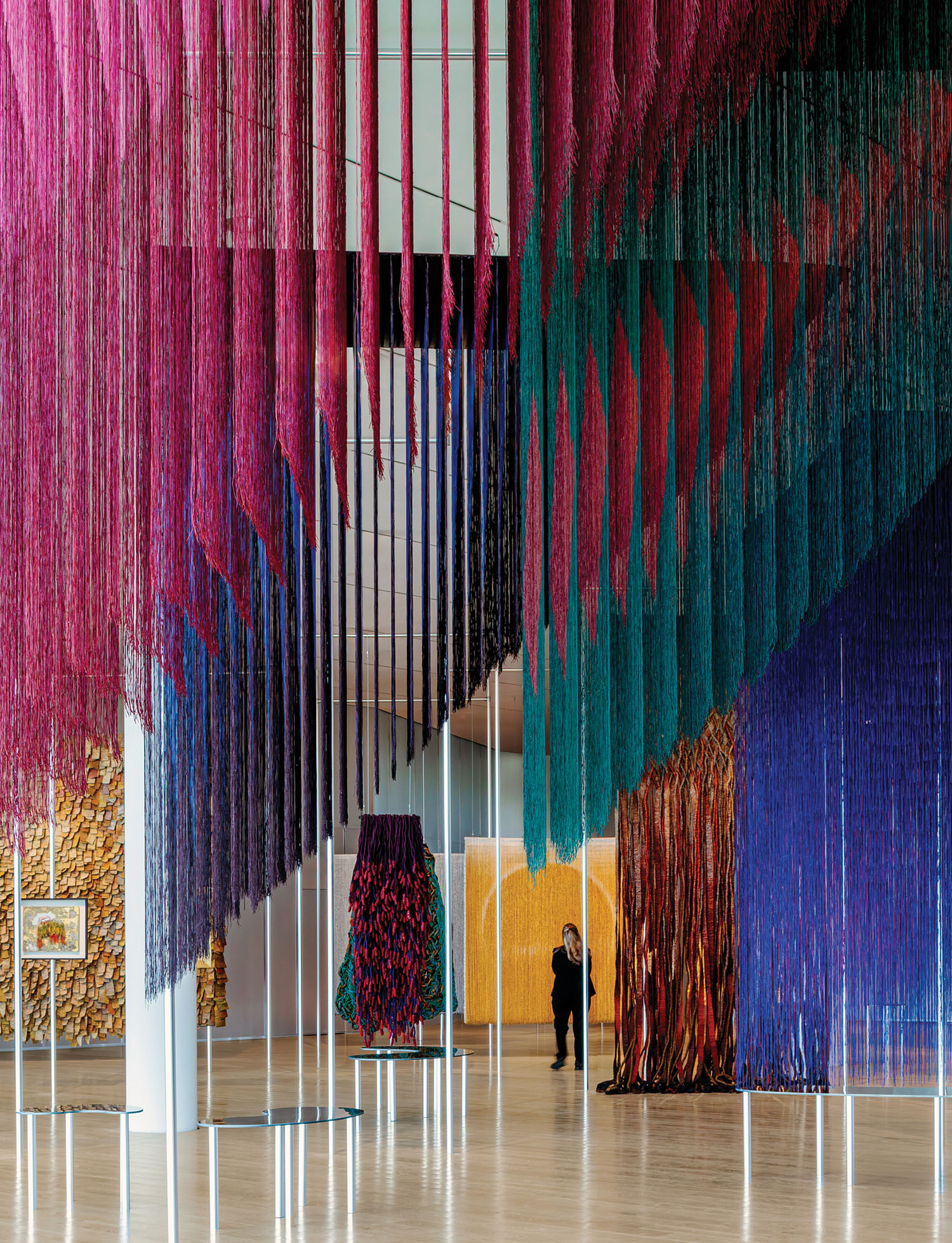10 Questions With… Sylvie Johnson
 A self-taught weaver whose work adorns some of the world’s most opulent homes, as well as some rare public spaces such as King Mohammed VI’s Royal Mansour hotel in Marrakesh, Sylvie Johnson splits her time between her Paris atelier and the Fall River, Massachusetts, workshop of Merida, where she has served as artistic director for the past two-and-a-half years. Prior to joining the Merida team, Johnson kept a relatively low profile while diligently producing bespoke textile masterpieces for the likes of Annabelle Selldorf, Peter Marino, and Jacques Grange. The master weaver was born in Dakar to a Senegalese mother and a Ghanaian father, and grew up in West Africa and Marseille, yet her fifth rug collection for Merida draws on the rich creativity of the Italian Renaissance and Ottoman Empire. Here, Johnson describes how she finds color inspiration in the light-gray marble and beige fresco of a palazzo’s flooring in Florence, or in the royal purple worn by kings, nobles, popes, and the Medici. No stranger to mixing top-notch materials, powered looms, and handwork, Johnson creates textiles with a signature depth and complexity.
A self-taught weaver whose work adorns some of the world’s most opulent homes, as well as some rare public spaces such as King Mohammed VI’s Royal Mansour hotel in Marrakesh, Sylvie Johnson splits her time between her Paris atelier and the Fall River, Massachusetts, workshop of Merida, where she has served as artistic director for the past two-and-a-half years. Prior to joining the Merida team, Johnson kept a relatively low profile while diligently producing bespoke textile masterpieces for the likes of Annabelle Selldorf, Peter Marino, and Jacques Grange. The master weaver was born in Dakar to a Senegalese mother and a Ghanaian father, and grew up in West Africa and Marseille, yet her fifth rug collection for Merida draws on the rich creativity of the Italian Renaissance and Ottoman Empire. Here, Johnson describes how she finds color inspiration in the light-gray marble and beige fresco of a palazzo’s flooring in Florence, or in the royal purple worn by kings, nobles, popes, and the Medici. No stranger to mixing top-notch materials, powered looms, and handwork, Johnson creates textiles with a signature depth and complexity.
Interior Design: What made you fall in love with textiles?
Sylvie Johnson: My love for textiles is rooted in my love for art since I was 10 years old. I originally studied economics but after working in the art business for a few years, I ended up starting my own Parisian atelier company in 2003. During that time when I was working in the art business, planning and managing architecture and design exhibitions, I came up with the idea of haute couture for decoration. I wanted to create textiles with beautiful materials and cultural art references. While on vacation in France I stumbled into an exhibition and instantly fell in love with the textiles on display. Soon afterwards, I decided to take a year off to teach myself how to weave and eventually start my own company.
ID: Having grown up in West Africa and Marseille, and now living in Paris, you’re able to draw on a rich visual history. How do cultural references play a part in your work?
SJ: Throughout my life travels, my cultural references go beyond just where I lived and became more about the fascination I have for different civilizations, for cultures before ours, and how all cultures are connected. Masters of know-how left us incredible pieces of art with a little bit of their soul in museums or in archeological sites. Their extreme, high-level skills became art not because they decided to, but because those pieces of art touch people on a deeper level, creating a special emotional connection.

ID: Do you collect anything?
SJ: My love of art can be seen through some pieces that I have kept over time like drawings and artifacts from Japanese archeology. But I can’t say that I’m collecting, rather that I’m living with some pieces that help me see a different kind of beauty and poetry.
ID: You’ve recently launched Portfolio 2020, a collection with the rug brand Merida. What is unique about it?
SJ: Portfolio 2020 is inspired by the colors, architecture, and artistic elements from the Italian Renaissance and Ottoman Empire. For the last 13 years, I have spent the last week of January in Florence, a city I love. It is full of references to Renaissance Italy with paintings and sculptures in the Uffizi Gallery and amazing stone marquetry in the Opificio delle Pietre Dure museum. The colors for this new collection can be seen in lots of Renaissance paintings from artists like Tintoretto, Botticelli, and Raphael as well as in details of architecture like the Pitti Palace. Many of the bold colors in this collection (like Orchil, Grenat, and Verona) were used for bankers, popes, and the Medici because they were rare and difficult to produce, requiring a long process and many unique skills to create.
Portfolio is the first step before our [forthcoming] Atelier collection; it’s where we show the different effects from the way we combine yarns (ply or twist). The combination of different yarns works with the combination of various colors; it’s a conversation that will grow further in Atelier. This collection is about unstructured stripes and how those lines present themselves differently depending on the type of yarns we use whether thick felted wool, mohair, or crimped yarn. It’s really an exercise of composition and rhythm.

ID: How did the relationship with Merida come about? How long have you been working with them?
SJ: I have been Merida’s artistic director for two-and-a-half years now. This is my fifth collection and I am so proud of what Merida and I were able to build during this time. Catherine Connolly (Merida’s CEO) is very open-minded and has created the space for us to be able to use all the workshop tools in any collection, which means time to practice and experiment. I love the team environment that Merida has created and built in Fall River. It means so much to me to have the freedom to create collections that I believe are best for the brand and the clients, even if that means going deeper into the conception and in the production of a collection.
ID: You’ve mastered working with a broad range of materials: cotton, silk, wool, leather, cork, raffia, horsehair. How do you go about selecting the best materials for a project?
SJ: In my own company, I have used all of those fantastic natural materials since the very beginning. They are the base to the refinement of my textiles and have become my signature. Each year I make a selection of yarns (usually used for haute couture) from my suppliers in Japan, Italy, France, and Switzerland and start to make some compositions or “textile poems” as I like to call them. With Merida, since the yarns are intended for rugs, I select different kinds of yarn like wool, crimped yarn, mohair and alpaca (we used around six different yarns for the Portfolio collection). I often find myself traveling with the yarns before making final selections so I can fully grasp their textures and how they work with different colors. The selection is only the first step of the entire process, but the most important part is what you do with them from there.

ID: Are you specific about the types of looms and weavers that you work with?
SJ: In Fall River, where Merida makes all of the rugs, we use a combination of handwork, heirloom looms, and machine looms to craft our designs. Some are flat woven on our dobby looms while some are tufted or made on our jacquard looms. We have a master weaver in Fall River, John Costa, who actually started weaving when he was only 14 years old. He has incredible knowledge and can find solutions for anything, which is priceless for the development of our designs.
ID: What role does design software play in your work?
SJ: Personally, I’m not using software but only sharing my sketches and yarn compositions. From there, my team translates my sketches and uses a computer punch card dobby to create the woven patterns in the Merida wool rug collection. Multiple rows of holes are punched on each card with one complete card corresponding to one row of the rug design. We also use Pointcarre, a textile CAD software for jacquard textiles, and Hitex, an automatic system for tufting the rugs.
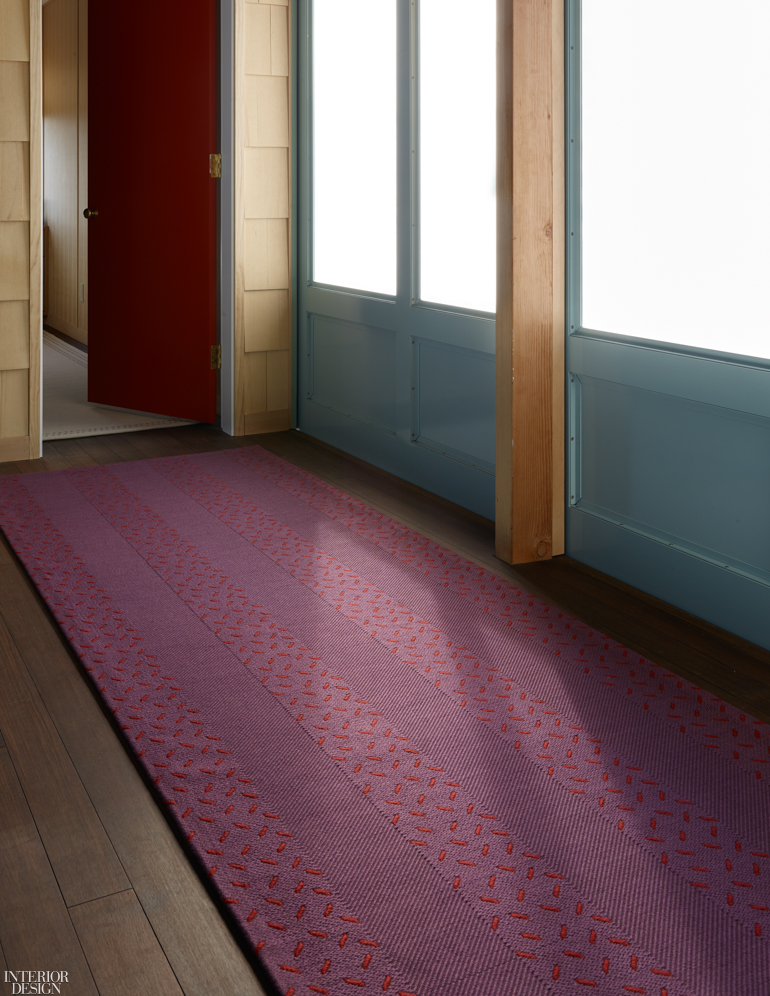
ID: How are you feeling about the state of the design industry these days?
SJ: The design industry needs to go deeper. We all have to add more culture and references to our projects. It’s important to use those layers of civilization and art before us to create pieces that are truly meaningful. We must use and reinforce skills to create objects with soul and teach ourselves to be humble enough to study and want to learn more.
ID: What type of projects are on your wish list—is there anything you’re longing to work on, but haven’t had the chance to do yet?
SJ: I love all the projects I have worked on, because I have been lucky enough to be a part of very passionate projects where my creativity was not framed. I’ve made so many different projects in my 17 years with textiles that I’m simply just grateful.
